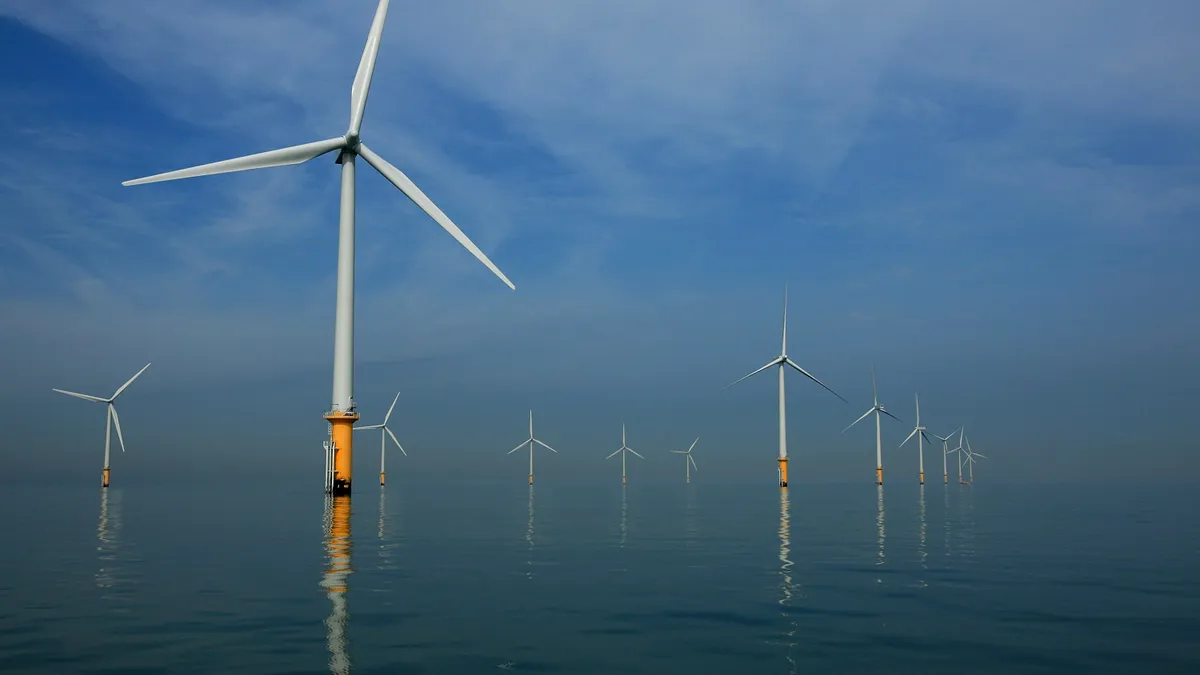Dive Brief:
- Offshore wind is among the options Duke Energy expects to discuss with North Carolina regulators in the wake of the state’s new goal to reduce carbon emissions 70% by 2030 at the state's power plants, Lynn Good, the utility’s CEO and president, told analysts on Thursday during the company's third quarter earnings call.
- The utility will be working with the North Carolina Utilities Commission over the coming year to develop a decarbonization plan aligned with energy legislation signed by Gov. Roy Cooper, D, on Oct. 13.
- Duke posted adjusted quarterly earnings per share of $1.88, and narrowed its 2021 adjusted EPS guidance range to $5.15 to $5.30. A long-term adjusted EPS growth rate of 5% to 7% may be possible through 2025, the company said.
Dive Insight:
North Carolina’s new energy bill, House Bill 951, takes a broad-brush approach in mandating 70% decarbonization of the state’s electric power sector over the current decade and complete decarbonization by 2050. In particular, the new law is designed as a framework, leaving it up to state regulators to hash out the details of exactly how to achieve those big reductions in greenhouse gas emissions.
Duke's Good told analysts on Thursday’s call she anticipates that offshore wind will be part of the discussions with North Carolina regulators in the coming year over a longer-term decarbonization plan.
In the 2020 Integrated Resource Plan (IRP) filed with state regulators, Duke envisioned off-shore wind as part of a mix of power sources that would get the company to the 70% carbon reduction level, she said.
“We are evaluating off-shore wind,” Good said. And in response to an analyst’s question, she also dropped a hint as to what Duke may be evaluating.
Good noted the federal Bureau of Ocean Energy Management’s decision last month to move ahead with a lease sale for the Carolina Long Bay offshore wind development site off the coast of North Carolina and South Carolina.
“I think you may have noticed there was a proposed sale notice issued for a lease off the coast of North Carolina,” Good said. “The Kitty Hawk lease area is also there, so I would just say … there's more to come here.”
Duke, which operates six nuclear reactors in the Carolinas, has also not ruled out small nuclear reactors as part of its decarbonization push. One of the emissions reduction scenarios Duke put forth in its 2020 IRP “included advanced nuclear or a small modular reactor,” Good said.
Good said the “momentum is picking up” at the state level on efforts to decarbonize the electric grid, with states that Duke provides power in showing interest in building out a “base amount of electric vehicle infrastructure."
There are also on the state level “increasing opportunities for renewable investment, for storage investment, energy efficiency, demand response investment,” she said.
State-level efforts, in turn, could get a major boost if clean energy investments, embedded in the $1.75 trillion reconciliation bill, clear Congress, Good indicated.
“Of course, all states are watching what's going on at the federal level,” Good said. “And the tax incentives in particular can be additive to our progress in the states.”














